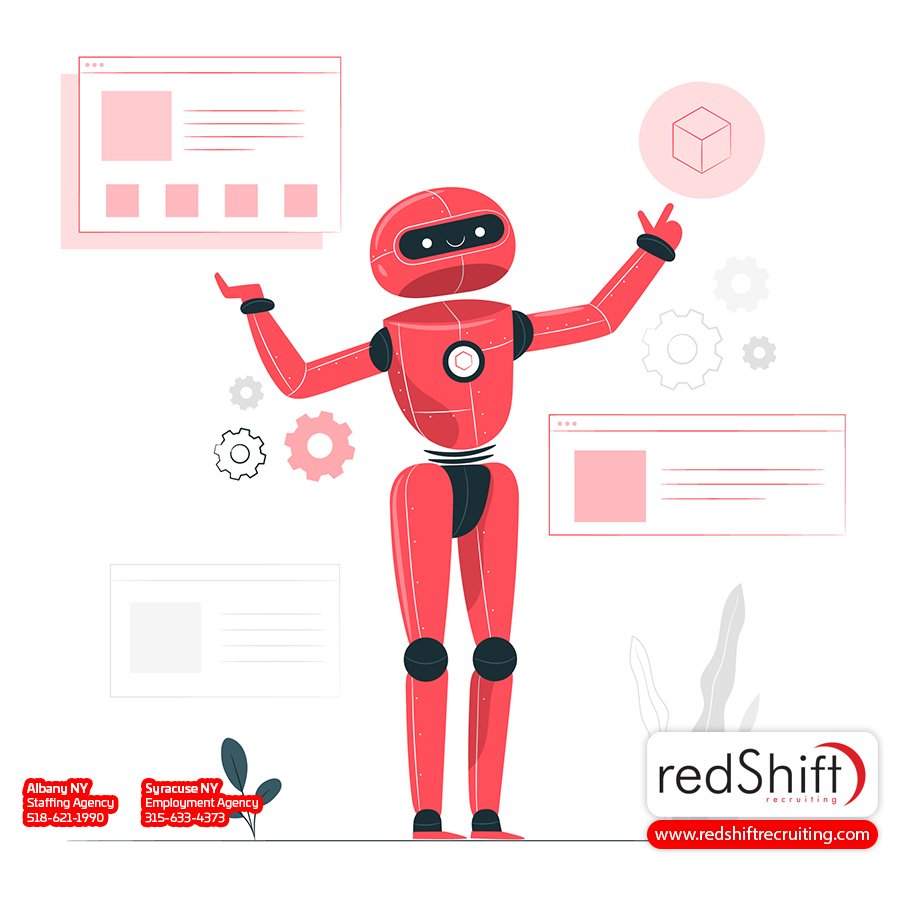
Machine Translation: Localizing Web Content And Providing Multilingual Customer Support
Are you a global business looking to expand your online presence and reach a wider audience? Imagine this scenario: You own a successful e-commerce website that sells clothing worldwide. Your customers come from various countries, each with different languages and cultural nuances.
To effectively communicate with your international customers, you need to localize your web content and provide multilingual customer support. This is where machine translation comes into play.
Machine translation, also known as MT, is the process of using computer algorithms to automatically translate text from one language to another. It has revolutionized the way businesses operate in today's globalized world. By leveraging MT technology, you can seamlessly translate your website content into multiple languages, making it more accessible and appealing to a diverse set of customers.
Additionally, machine translation can be used to provide multilingual customer support by instantly translating customer queries and responses in real-time. This not only enhances the user experience but also demonstrates your commitment to providing inclusive services to all customers regardless of their language or location.
By incorporating machine translation into your web content localization and customer support strategy, you can establish strong connections with your global audience while fostering a sense of belonging for all users on your platform.
Introduction
Are you ready to dive into the exciting world of machine translation and discover how it can revolutionize web content localization and provide seamless multilingual customer support?
Machine translation (MT) is a field of study that focuses on developing software or engines capable of automatically translating text from one language to another. It has gained significant importance in recent years due to its ability to efficiently localize web content and offer multilingual customer support.
There are two main types of machine translation: statistical machine translation (SMT) and neural machine translation (NMT). SMT uses statistical models to analyze large amounts of bilingual texts, while NMT employs artificial neural networks to generate translations. Both approaches have their strengths and limitations, but they both contribute to automating the translation process.
Web content localization involves adapting websites or online platforms to suit the cultural and linguistic preferences of different target audiences. Machine translation software plays a crucial role in this process by providing quick automated translations that can be further edited by human translators if needed. This combination of hybrid machine translation and human translation ensures accurate and culturally appropriate localized content.
In addition, machine translation engines are increasingly being used for multilingual customer support, allowing companies to communicate effectively with their customers in various languages. Instead of relying solely on human translators, businesses can use these engines for real-time translations during live chats or ticketing systems. This not only saves time but also improves customer satisfaction by providing instant support in the customer's preferred language.
Overall, machine translation has revolutionized web content localization and enabled businesses to provide efficient multilingual customer support. By automating parts of the translation process while still involving human expertise when necessary, it offers a cost-effective solution that caters to diverse target audiences worldwide. So why wait? Embrace the power and benefits of machine translation, today!
Understanding Machine Translation
Despite its complexity, machine translation (MT) plays a crucial role in the field of AI and is responsible for converting text from one language to another.
MT systems have evolved over time, with different techniques being developed to improve the accuracy and quality of translations.
One key technique is rule-based machine translation, where linguistic rules and dictionaries are used to translate text. While this approach can be effective for simple language pairs, it struggles with languages that have complex grammar or idiomatic expressions.
Another important technique in MT is statistical machine translation, which uses large amounts of bilingual texts to generate translations based on statistical patterns. This approach has been successful in improving translation quality for a wide range of language pairs. However, it still relies on human translators to create the initial training data and can struggle with low-resource languages.
The most recent advancement in MT is neural machine translation (NMT), which uses deep learning models to generate translations. NMT has shown remarkable improvements in translation accuracy and fluency compared to previous methods. It can handle complex sentence structures and capture contextual information better than rule-based or statistical approaches.
Overall, understanding machine translation involves knowing the different techniques used such as rule-based, statistical, and neural approaches. Each technique has its strengths and weaknesses depending on the language pair involved and the availability of training data.
As machine translation development continues to advance, we can expect further improvements in language translation technology through innovations like NLP algorithms and sophisticated translation management systems.
Machine Translation in Web Content Localization
To make your website accessible to a global audience, you'll want to ensure that your content is tailored for different languages using the power of machine translation.
Machine translation (MT) is a technology that automates the manual labor and process of translating text from one language to another. When it comes to web content localization, MT plays a crucial role in speeding up the translation process and providing basic but useful translations.
One popular example of machine translation for web content localization is Google Translate. This free online service uses machine learning algorithms and linguistic rules to automatically translate text into multiple languages. With Google Translate, you can easily integrate a translation widget into your website, allowing visitors to view your content in their preferred language with just a click of a button.
While the translations generated by machine translation engines like Google Translate may not always be perfect, they provide a good starting point and can be further improved through human post editing. This process involves having professional translators review and refine the translated text to enhance its accuracy and readability.
By combining the speed of machine translations with the expertise of a human translator and post editing, you can achieve high-quality translations that resonate with your multilingual audience.
Machine Translation for Multilingual Customer Support
If you want to effectively assist customers from different language backgrounds, it's crucial to harness the power of machine translation for seamless communication and enhanced user experience.
Did you know that 75% of consumers are more likely to buy a product if the information is available in their native language? Machine translation (MT) plays a vital role in multilingual customer support by breaking down the language barrier and allowing businesses to provide support in multiple languages.
Here are three reasons why machine translation is essential for multilingual customer support:
Localize web content: With the help of machine translation, businesses can easily localize their web content and make it accessible to customers worldwide. By translating websites, product descriptions, and other support materials into different languages, companies can reach a broader audience and cater to their specific needs.
Enhanced user experience: Machine translation technology enables quick and accurate translations, ensuring that customers receive prompt assistance in their preferred language. This improves overall user experience by eliminating delays caused by manual translation processes or waiting for human involvement. Customers feel valued when they can communicate effortlessly with customer support representatives.
Cost-effective solution: Utilizing machine translation reduces the reliance on expensive human-based translation services. Although post-editing might be required to refine the translated content, this approach significantly cuts down costs associated with hiring professional translators for every interaction. Machine translation powered by artificial intelligence provides an efficient and affordable option for businesses looking to expand their multilingual customer support capabilities.
Incorporating machine translation into your customer support strategy allows you to overcome language barriers, deliver localized content, enhance user experience, and save costs on translations. By leveraging this powerful technology alongside human expertise in post-editing, businesses can bridge linguistic gaps and foster meaningful connections with customers from diverse backgrounds.
Comparison: MT in Web Content Localization Vs. Multilingual Customer Support
Immerse yourself in the fascinating world of web content localization and multilingual customer support comparisons. Machine translation (MT) plays a crucial role in both fields, but there are notable differences in how it's utilized.
In web content localization, the MT engine serves as a generalized translation tool that helps translate website content into multiple languages efficiently. The source language is fed into the MT system along with relevant training data to generate translations in various target languages.
One key difference between web content localization and multilingual customer support lies in the level of accuracy required for translations. In web content localization, the primary goal is to provide an understanding of the content to users across different regions. While machine-translated output can be used as a starting point, it often requires human post-editing to ensure accurate translations that capture nuances specific to each target language.
On the other hand, multilingual customer support demands more precise and contextually accurate translations early machines, since it involves direct communication with customers. Therefore, while MT can still be employed in this field, there is a greater emphasis on human involvement to guarantee high-quality interactions with customers.
Advancements in machine translation technology can have significant impacts on both web content localization and multilingual customer support. Improved algorithms and access to vast amounts of training data enable MT systems to produce more accurate translations than ever before. This has led to increased efficiency and cost-effectiveness in translating large volumes of web content across multiple languages. Additionally, advancements such as neural machine translation have enhanced the naturalness and fluency of translated text, making it appear more native-like.
In terms of multilingual customer support, advancements in MT can streamline communication channels by automating initial responses or providing instant translation services during live chats or phone calls. This not only improves response times but also enhances overall customer experience by eliminating language barriers. However, despite these advancements, it's important to note that human involvement remains critical for ensuring quality control and addressing complex linguistic nuances that machines may struggle with.
Ultimately, the combination of machine translation technology and human expertise offers immense potential for both web content localization and multilingual customer support, enabling businesses to expand their reach and cater to a global audience effectively.
Human Translation
Imagine a world where language barriers no longer hinder businesses from connecting with customers worldwide, thanks to the transformative potential of machine translation in web content localization and multilingual customer support.
Machine translation, powered by advanced technology that replicates the workings of the human brain and possesses enormous data processing power, is revolutionizing how businesses communicate across different languages. By understanding how modern machine translation really works, we can appreciate its ability to translate text quickly and accurately.
Machine translation operates through complex algorithms known as neural networks, which enable computer software to learn patterns and make predictions based on high-quality training data. These algorithms analyze vast amounts of linguistic data to generate translations that are increasingly accurate and natural-sounding. The translations performed by machine translation systems are not only fast but also cost-effective compared to traditional human translators. This part basic machine translation makes it a valuable tool for businesses seeking to reach global markets efficiently.
Machine translation has immense potential in both web content localization and multilingual customer support. Its ability to process enormous amounts of data using advanced machine learning algorithms enables it to provide high-quality translations quickly and at a lower cost than traditional methods.
As technology continues to improve, machine translation will only become more precise and efficient in breaking down language barriers, allowing businesses worldwide to connect with their customers on a deeper level.
Frequently Asked Questions
What are the limitations of machine translation in accurately translating web content?
The limitations of machine translation in accurately translating web content are numerous. While machine translation has made significant advancements in recent years, it still struggles with understanding the nuances of human language and cultural context. This can lead to mistranslations or awkward phrasing that may confuse or mislead users.
Additionally, machine translation often fails to capture the tone and style of the original text, resulting in a loss of brand voice and identity. Another limitation is the inability to handle specialized terminology or industry-specific jargon effectively, which can lead to inaccuracies in technical content.
Moreover, machine translation relies on pre-existing translations and lacks the ability to adapt to evolving language trends or slang expressions. Overall, while machine translation offers convenience and speed, it falls short when it comes to accurately conveying the subtleties of web content across different languages.
How does machine translation handle complex language nuances and idiomatic expressions?
To truly grasp the remarkable capabilities of machine translation, you must understand how it handles the intricate world of language nuances and idiomatic expressions. Brace yourself for a journey into the depths of linguistic complexity as we delve into the inner workings of this technological marvel.
Machine translation employs advanced algorithms and statistical databases that analyze vast amounts of linguistic data to decipher context and meaning. It deftly navigates through the labyrinthine maze of idioms, recognizing their figurative nature and translating them with finesse. By harnessing its immense processing power, machine translation unveils the hidden treasures within complex language nuances, allowing you to bridge gaps between cultures, connect with diverse audiences, and establish a sense of belonging in an ever-expanding global community.
Can machine translation tools provide real-time translation for customer support interactions?
Yes, machine translation tools can provide real-time translation for customer support interactions. These tools use advanced algorithms and neural networks to quickly and accurately translate text or speech from one language to another.
By leveraging the power of artificial intelligence, these tools are able to understand and interpret the nuances of different languages, including idiomatic expressions and complex language structures. This allows them to provide accurate translations in real-time, ensuring effective communication between customer support representatives and customers who speak different languages.
With machine translation tools, businesses can overcome language barriers and provide multilingual customer support without the need for human translators or interpreters.
What are the potential risks and challenges of relying solely on machine translation for customer support?
Imagine a scenario where you receive a customer complaint in a language you don't understand. You rely on a machine translation tool to provide an instant response, but what if the automated translation itself is inaccurate or fails to capture the nuance of the customer's issue? This is just one of the many risks associated with relying solely on machine translation for customer support.
Accuracy, cultural sensitivity, and context are crucial in effective communication, especially when dealing with complex problems or sensitive issues. Machine translation tools may struggle to accurately translate idioms, slang, or technical terms specific to certain industries. Additionally, they may not be able to pick up on subtle nuances in language that can greatly impact customer satisfaction.
Moreover, there is always a risk of misinterpretation or miscommunication due to errors in grammar or syntax. While machine translation can certainly be useful as a tool, it should not replace human agents who possess linguistic expertise and cultural understanding necessary for providing high-quality customer support experiences.
How does machine translation compare to human translation in terms of accuracy and quality in both web content localization and customer support?
In terms of accuracy and quality, machine translation falls short compared to human translation in both web content localization and customer support.
While machine translation has made significant advancements, it still struggles with nuances specific language, idiomatic expressions, cultural references, and context-dependent translations that can greatly impact the overall meaning and understanding of a text.
Human translators are able to take into account these subtleties and adapt their translations accordingly, resulting in more accurate and high-quality translations.
Additionally, human translators possess cultural knowledge and domain expertise that machines lack, allowing them to provide localized content and tailored customer support that resonates with the target audience on a deeper level.
Therefore, relying solely on machine translation for these tasks can pose risks in terms of accuracy and quality, potentially leading to misunderstandings or miscommunications that may harm the user experience or brand reputation.
Conclusion
In conclusion, the machine translation engine (MT) proves to be an invaluable tool for localizing web content and providing multilingual customer support. Through its advanced algorithms and vast language databases, MT efficiently translates text in real-time, enabling businesses to reach a global audience without the need for manual translation services.
The integration of MT in web content localization ensures that websites in learning languages are accessible and comprehensible to users from different linguistic backgrounds.
Moreover, MT plays a crucial role in enhancing multilingual customer support. By utilizing MT, businesses can promptly respond to customer queries and provide solutions in their preferred languages. This not only improves customer satisfaction but also strengthens brand loyalty. Additionally, the use of MT enables companies to expand their market reach by effortlessly communicating with customers worldwide.
However, it is important to note that while MT offers significant benefits, it is not without limitations. Accuracy can sometimes be compromised due to the complexity of certain languages or context-specific nuances. Therefore, human review and editing remain essential for ensuring precise translations that convey the intended meaning accurately.
In conclusion, machine translation serves as a powerful tool for both web content localization and multilingual customer support. Its efficiency and speed enable businesses to overcome language barriers and cater to diverse audiences effectively. With continuous advancements in machine learning algorithms and improvements in language coverage, the future of machine translation holds great potential for revolutionizing global communication across various industries.




